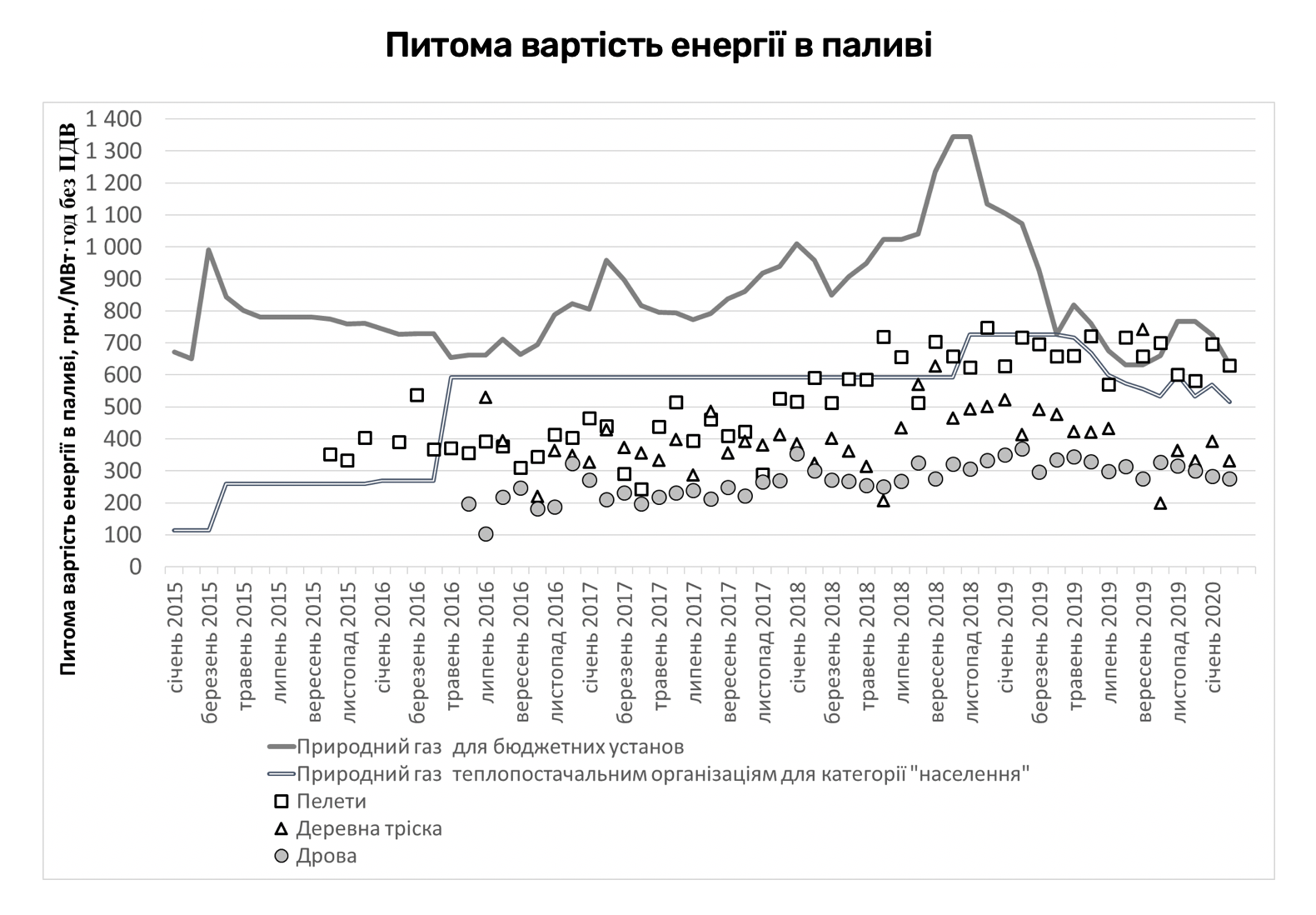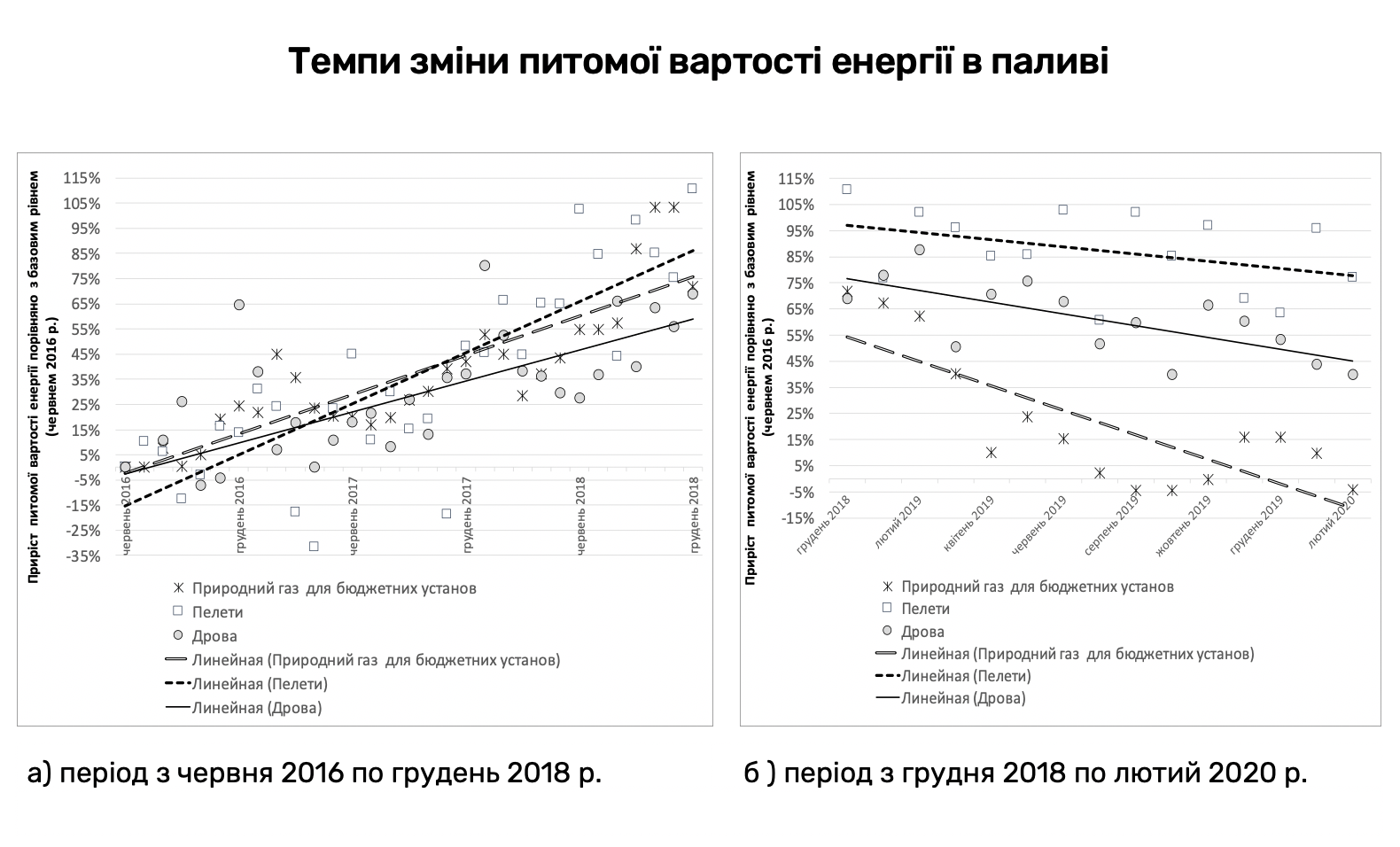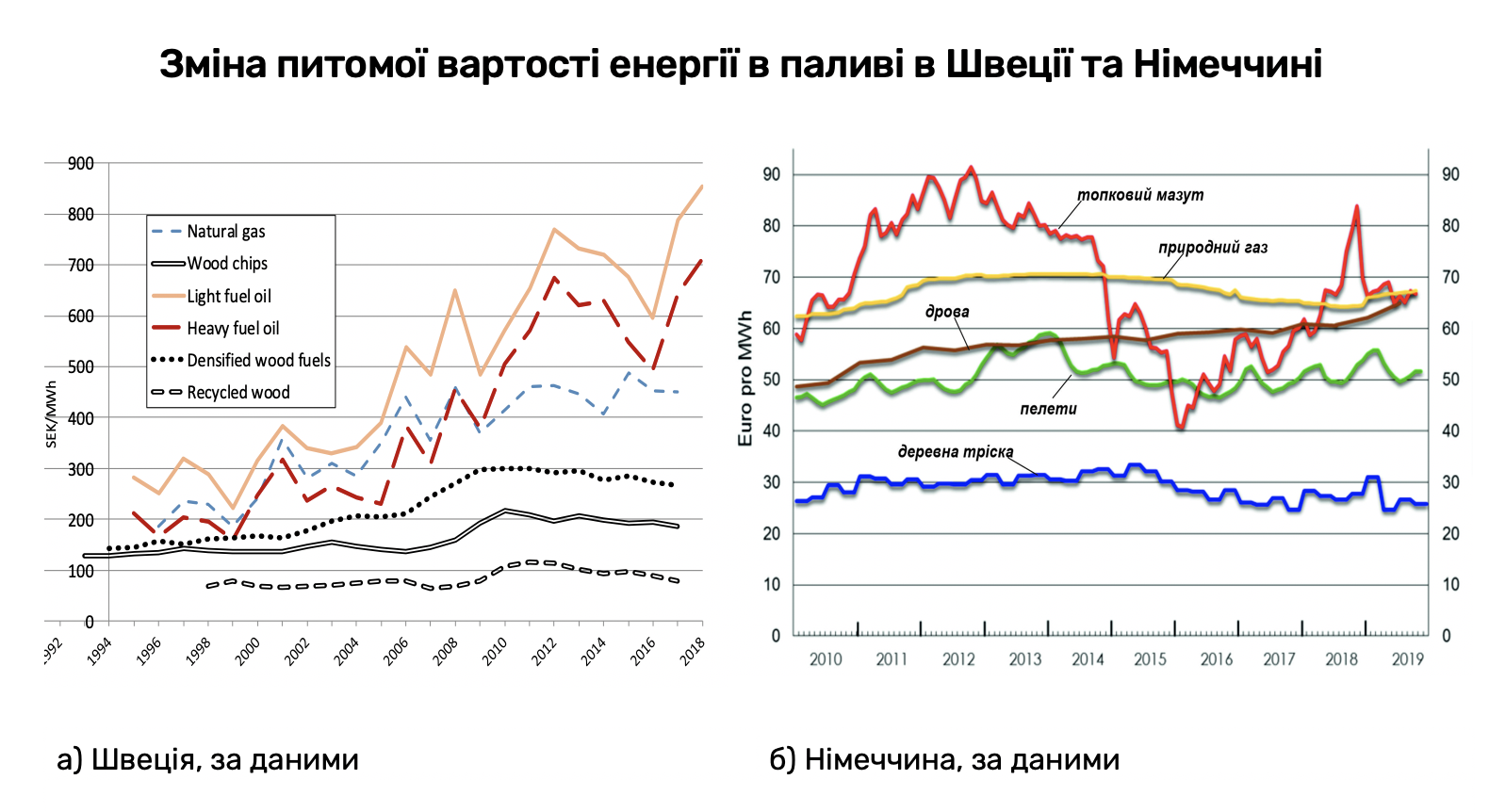Biomass is cheaper than natural gas — a study of changes in market prices of solid biofuels
UABIO expert Volodymyr Kramar on a convenient method of determining energy prices based on the unit cost of energy contained in fuel. This allows to compare different types of solid, liquid and gaseous fuels.
The results of the study of changes in market prices of solid biofuels (data from the system of electronic public purchasing “Prozorro”) and natural gas for the period from December 2016 to the end of February 2020.
For more than three years, a gradual increase in the price of natural gas for budget recipients has been recorded, at this time:
- the unit cost of energy from biomass remained at a relatively stable level,
- for all types of biomass price was lower than the corresponding figure for natural gas, both for the residents and for budget recipients.

Price ratio of natural gas and biomass
In 2018, there was a significant increase in the price of natural gas for budget recipients and residents, which was accompanied by a significant increase in fuel biomass prices.
The decrease in the price of natural gas for budget recipients from the end of 2018 and for the residents from May 2019 led to a situation when the unit cost of energy in fuel for wood pellets was equal to or even higher than the corresponding figure for natural gas.
At the end of the winter of 2020, only wood chips and firewood had a unit energy cost less than natural gas.
In addition, there was a gradual decrease in the unit cost of energy from biomass.
We analyzed the rate of change in the unit cost of energy in fuel during the period of growth and decrease in the price of natural gas.
Some conclusions:
- During the period from June 2016 to December 2018, the growth rate of the unit cost of energy for biomass was almost the same as for natural gas. This figure for firewood grew at a slightly slower pace, but for wood pellets it even exceeded the growth rate for natural gas.
- During the period from June 2016 to December 2018, fuel biomass prices increased by 55% (for firewood) to 100% (for wood pellets).
- During the period from December 2018 to February 2020, there was a certain decrease in the unit cost of energy for biomass, but it occurred at a much slower pace than the decrease in the price of natural gas.

What is the result?
The price of natural gas both for the residents and for budget recipients has fallen even below the level that was in June 2016.
The unit cost of energy from wood pellets at the end of winter 2020 remained higher by about 75%, and from firewood – by 45% compared to 2016.
The same growth rate of the unit cost of energy for biomass and the price of fossil fuels is not typical for developed biofuel markets.
UABIO
Typically, the unit cost of energy and the growth rate of biomass prices are lower than the corresponding figures for the fossil fuels that it replaces. The growth rate for fuel biomass in Ukraine is too high, which is contrary to global trends.
For example, we give the dynamics of prices in Sweden and Germany. Countries have significant experience in the energy biomass usage and developed market mechanisms for pricing it, in particular participation in international trade.

Why so?
- Insufficient competition between suppliers and the regional nature of biomass trade in Ukraine.
- Most fuel biomass purchases in the Prozorro system involve only one supplier.
What does UABIO offer?
- Develop a competitive biofuel market in Ukraine.
- Eliminate barriers for biofuel producers to access raw materials.
- Promote the emergence of as many biofuel producers as possible.
- Create a biofuel exchange based on the organizational structure of the Lithuanian Biomass Exchange “BALTPOOL” with taking into account local characteristics.


